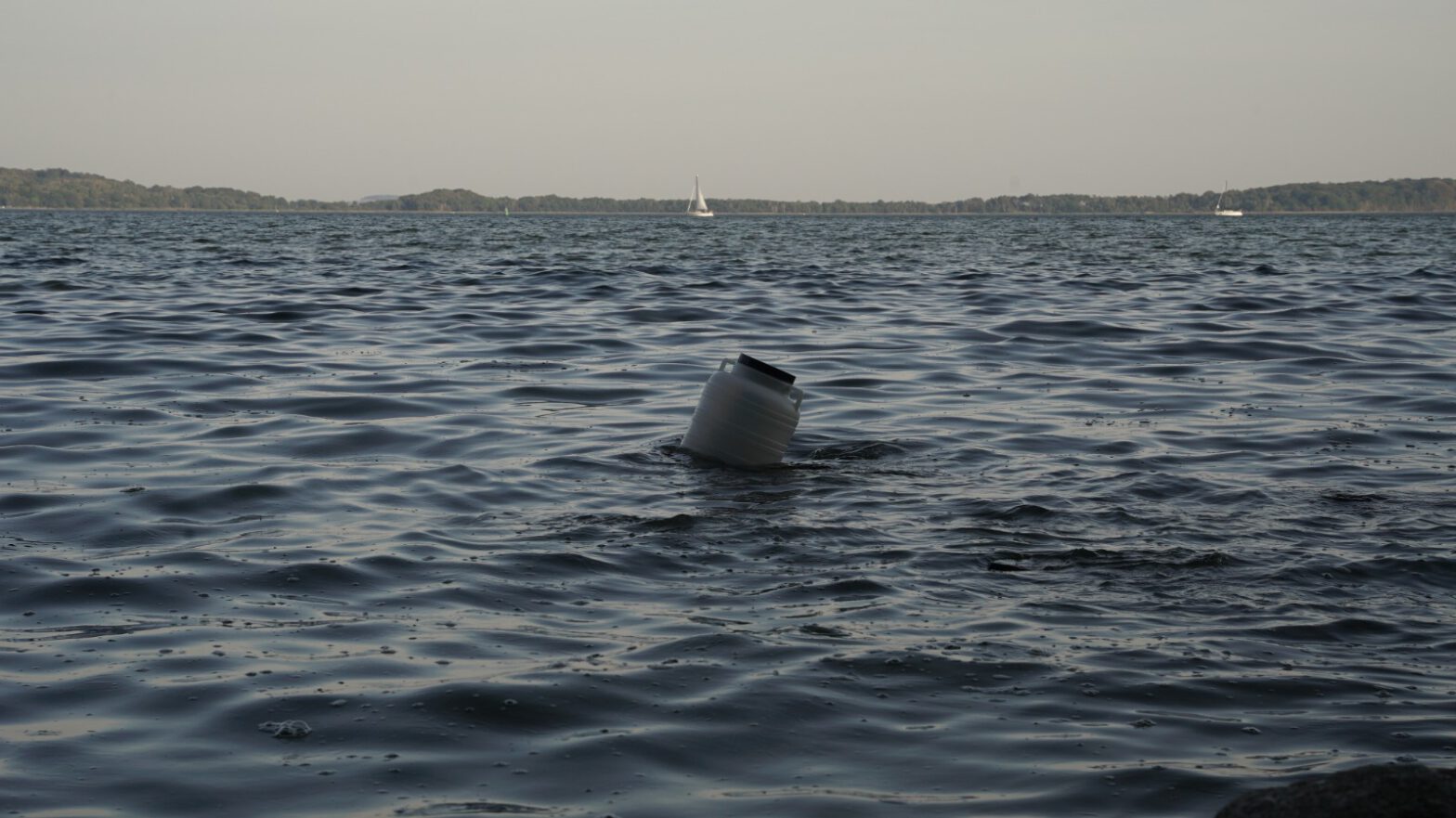by Florencia Curci, Fernanda Olivares & Nicolás Spencer
The noise emanating from the sea serves as a wake-up call, a mechanism or device, an artifice that heralds an emergency with nymphs’ cries from a place, be it a utopian or dystopian topos. This is how a narrative emerges, originating from the depths of the sea, carried by air currents and surface waves, creating turbulence as it interacts with the seabed and crashes against the coastal breakers. The mythological noise, or “Lärm,” undergoes a transformation and dissolves, taking on premonitory forms or dystopographies.
Lärm is a german term for “noise”, that comes from the old Italian “taking up arms”. While “alarm” signifies a warning signal, “Lärm” means “noise, commotion” and even “crowd, tumult.” In Spanish, “Alarma” or “Sierena” refers to a device or mechanism that emits an audible sound over a considerable distance and is sounded as a warning. This includes the sirens of ships, factories, ambulances, air strike, tsunamis, and avalanches. In the Greco-Latin tradition, Sirena is a nymph possessing the bust of a woman and fish’s body that lures sailors astray by enticing them with the sweetness of its song.
Dystopographies: Acoustic landscapes & Architectures of nature.
There were three buoys anchored to the seabed at about 2 m depth. Separated from each other about 130 m each and about 150 m from the coastal edge. Each of them was programmed to emit sounds of up to 165 dB from two-tone horns. The resulting sound is a composition that was intended to enhance the architecture of Wreechen Strand Bay by taking advantage of the predominantly southeasterly sea breeze of up to 8 knots.
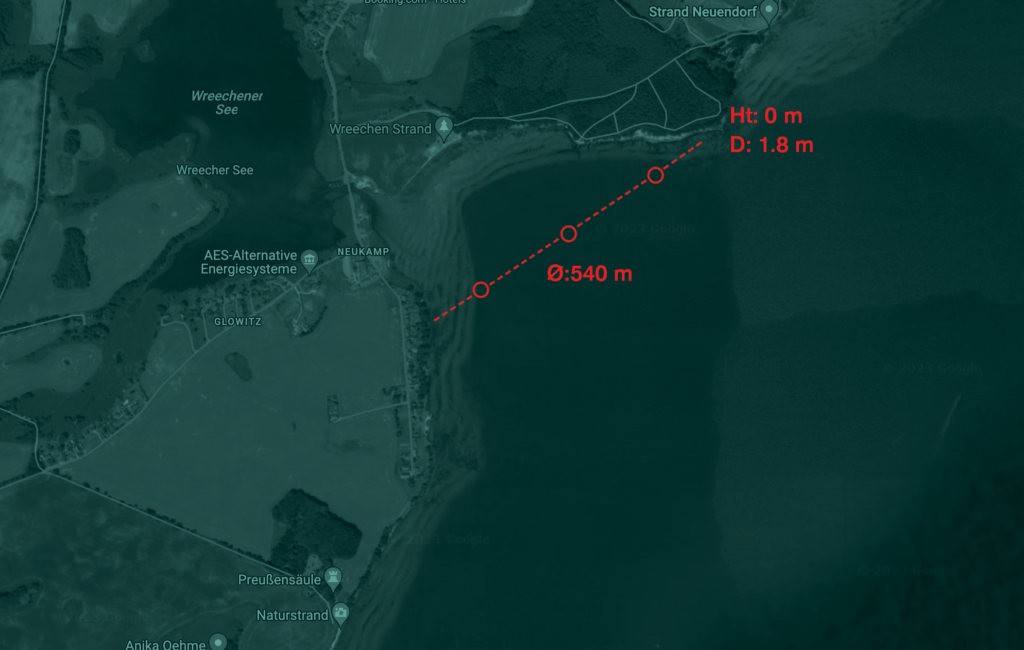
Postutopian compositions
While an utopia (/juːˈtoʊpiə/ yoo-TOH-pee-ə) typically describes an imaginary community or society that possesses highly desirable or near-perfect qualities for its members; a posutopia unanchors the future from a particular image or place and focuses on the proliferation of creation in conditions marked by the least possible domination, without subjecting the social to a homogeneous and constraining principle or to a definitive image of its destiny. An utopia uncoupled from its totalizing image and oriented to its relational processes, its ecologies.
The aim of Lärm’s first composition was to generate paths where the relation of the forces that inhabit the landscape could be audible. A score with a disposition to be not only modified substantially but played with the interactions of the environment. A first intent to sound with the wind, the tides, the difference of potentials, the inherent turbulence.
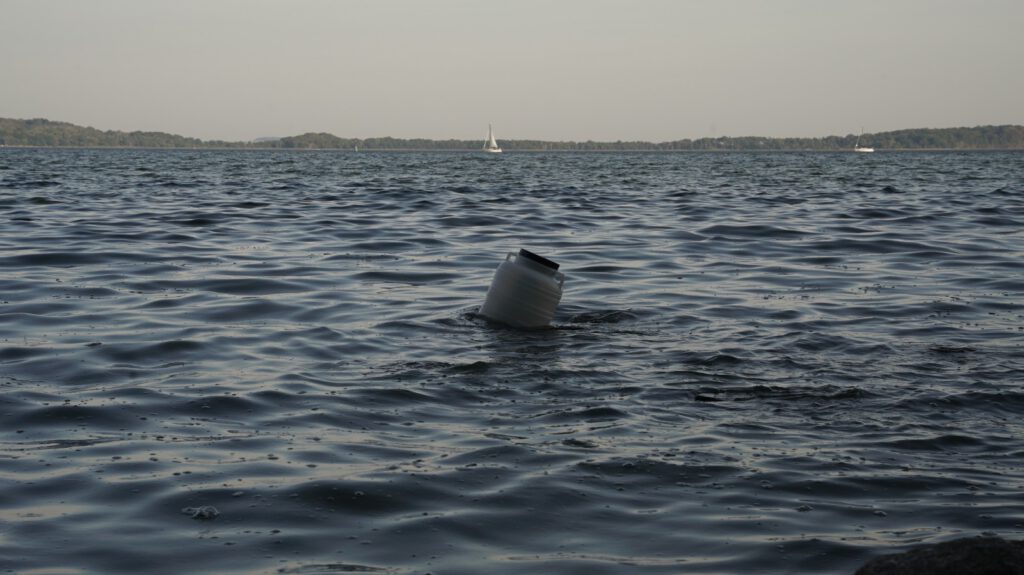
Alarm: əˈlɑːm/ /əˈlɑːrm/ Idioms. [countable, usually singular] a loud noise or a signal that warns people of danger or of a problem. She decided to sound the alarm (= warn people that the situation was dangerous). From Old French alarme, from Italian allarme, from all” arme! “to arms! “.
An alarm device is a mechanism that gives an audible, visual or other kind of alarm signal to alert someone to a problem or condition that requires urgent attention
The word alarm comes from the Old French a l’arme meaning “to the arms”, or “to the weapons”, telling armed men to pick up their weapons and get ready for action because an enemy may have suddenly appeared.
“There is no need to fear or hope, but only to look for new weapons”
Deleuze, G.
The devices installed inside the plastic buoys take elements of the marine landmark, the mark on the oceanic territory, to warn of potential risks, imminent danger, attack or an emergency that requires taking up arms. Thus, the int(f)ernal devices are activated automatically and with rudimentary methods, similar to the anti-technological methods used by the anarcho-primitivism of the late 70s.
“Lärm” is a rudimentary tool that calls for awareness through a cry that comes from the sea and not from people.
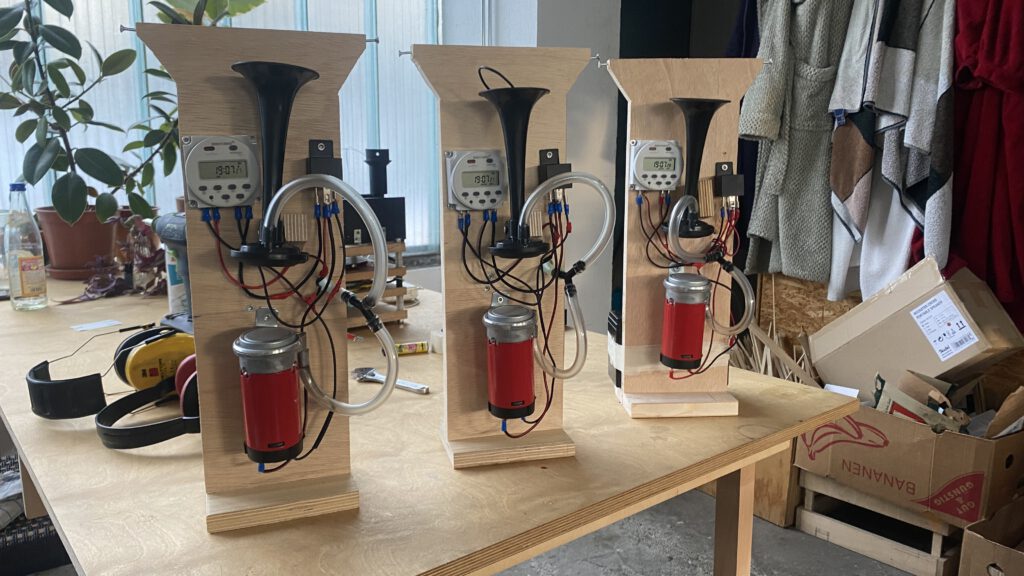
Futurities: design – improvisation. Action in Wreechen Bay 15-9-23 8:20 p.m.
We composed a 9 minute 42 second piece for 3 bitonal buoys programmed in 8 steps.
Our project, the futurity of our action, implied that each device sounded at the exact times that we had scheduled, producing a series of effects already tested, rehearsed, in the landscape-architecture. What was expected was that the composition would allow us to audibly sense the different forces operating at that precise time in the Bay: the same sound produced in three different sectors would reinforce resonances, different echoes, the speed and intensity of the wind. It would drag the elastic medium of the air, affecting sound propagation, the temperature of the air and water at different depths of the sea would also produce subtle effects.
Julien Nelson defines design as “a process by which something unknown can intentionally emerge from the known.” An extensive, discontinuous and reflective process, capable of being objectively diverse, involving adjustments, corrections, changes, disruptions. Contrary to what one might think, improvisation is not opposed to design. If the first is on the side of the spontaneous and the second on the side of planning and exhaustive control. It is possible to generate – design – conditions for improvisation. (Gatto, 2018).
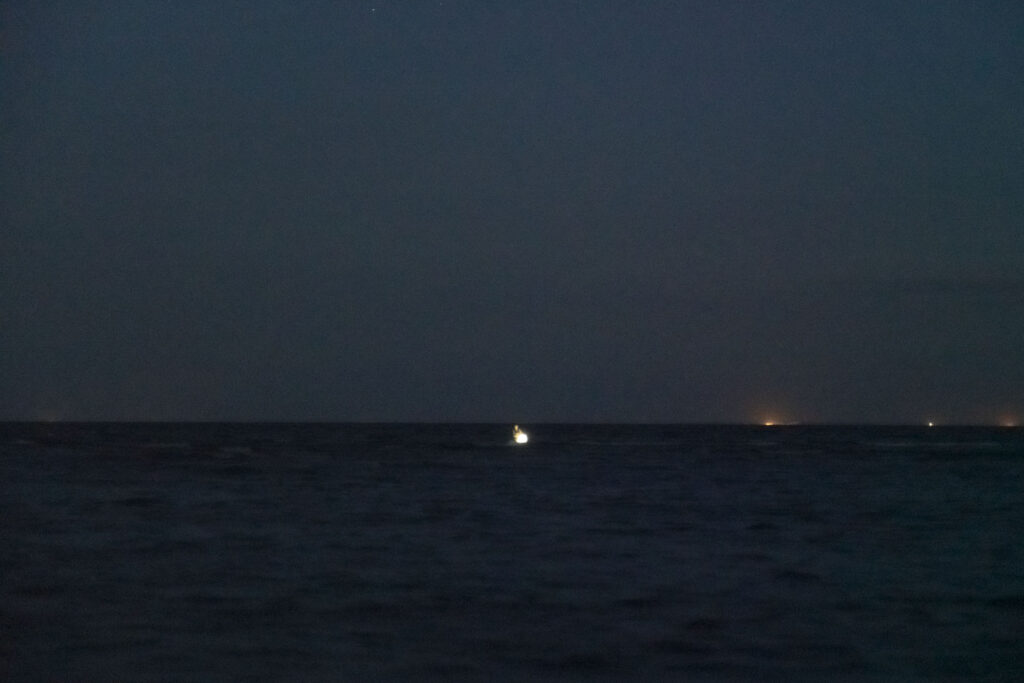
On September 15 we arrived at Wreechen Bay at night. Two hours later than the time in which we had scheduled the composition. By 6:00 p.m. we had projected that the buoys would already be placed in their positions in the sea at least 30 minutes in advance. It was 8:00 p.m. and we were arriving at the beach.
We quickly reprogrammed all the devices to begin the sound sequence at 8:20 p.m., while we obtained the anchors and the weight necessary to fix them in their positions in space. Our friends lent us lights to illuminate the devices.
We enter the sea. Each one carried a buoy. We had to move fast.
What we had imagined as an anonymous action was becoming, despite us, a performance.
The buoys began to ring as we dragged them out to sea.
Two of them stopped working a few minutes after the sequence started. Had we changed the programming wrong while we were running?
Return to the water. Activate the sound manually.
Listen to the resonance in the landscape.
Wait for a sound that might come from the other side.
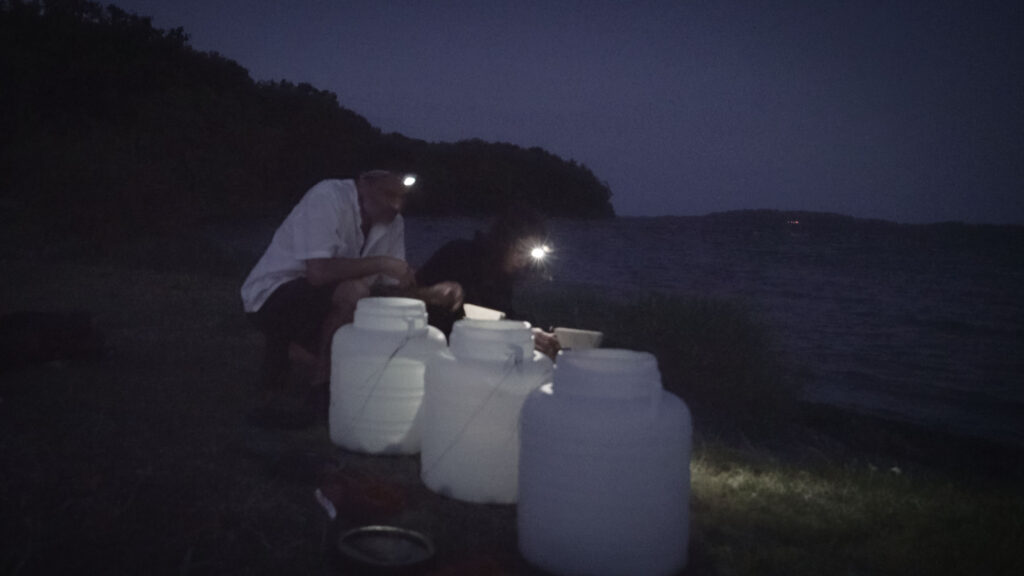
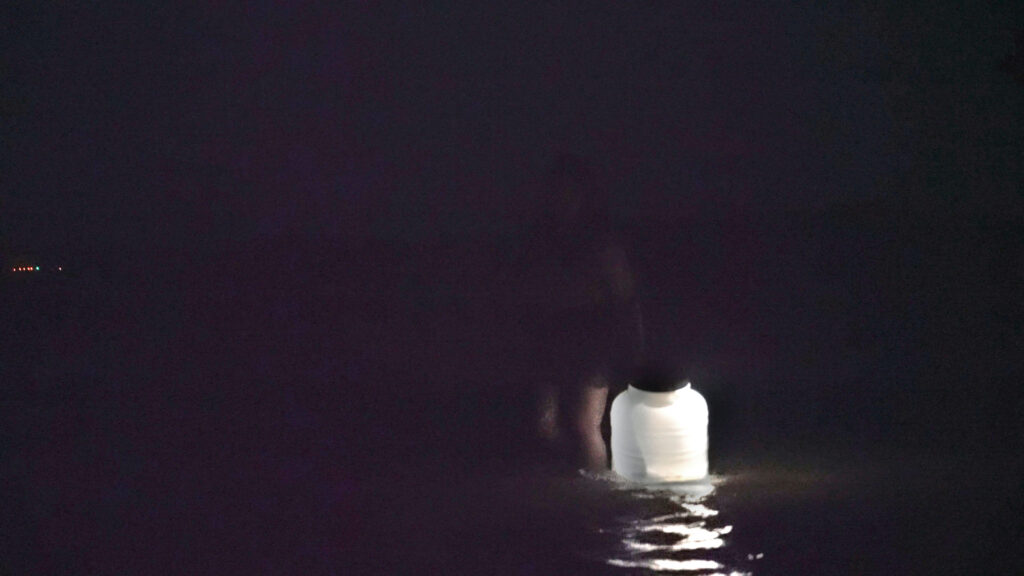
More than promoting the art of improvisation, the teaching of changing adaptation to a strongly, cruelly, competitive and unstable environment is imposed. The issue of design and improvisation goes beyond the artistic sphere to advance the social one in a broad sense and includes, in a singular way, the concern for the future.
Improvise comes from the Latin improvisus: the impossibility of seeing beforehand, of anticipating or preparing for something. The tension that may be maintained with futurizations is understood here (Gatto, 2018). “Do not look ahead in search of a finished and complete entity,” the musician T. C. Whitmer recommended to those who wanted to improvise in 1934 (Whitmer 1934); a way of saying that the present of improvisation opens an unplannable, unfinished future, and that the work of maintaining indeterminacy is, precisely, a job.
In Lärm”s first action, we do not merely depict or envision a future, nor do we issue directives on what must be done. Instead, we rescue, from the adaptation, a set of inquiries and a heightened sense of attentive listening. These elements direct our gaze towards the ‘how’ of our actions, aiming to enrich the endeavors of postcapitalist processes by attending to their intensity and scope.
Social thought has an inclination to read the social in terms of problems, asymmetries, injustices; Sometimes we forget that the tasks of research and thought spring from an impulse to increase our possibilities, our powers and conditions so that life can be less suffering and unfair, more creative and joyful.
(Gatto, E. 2018)
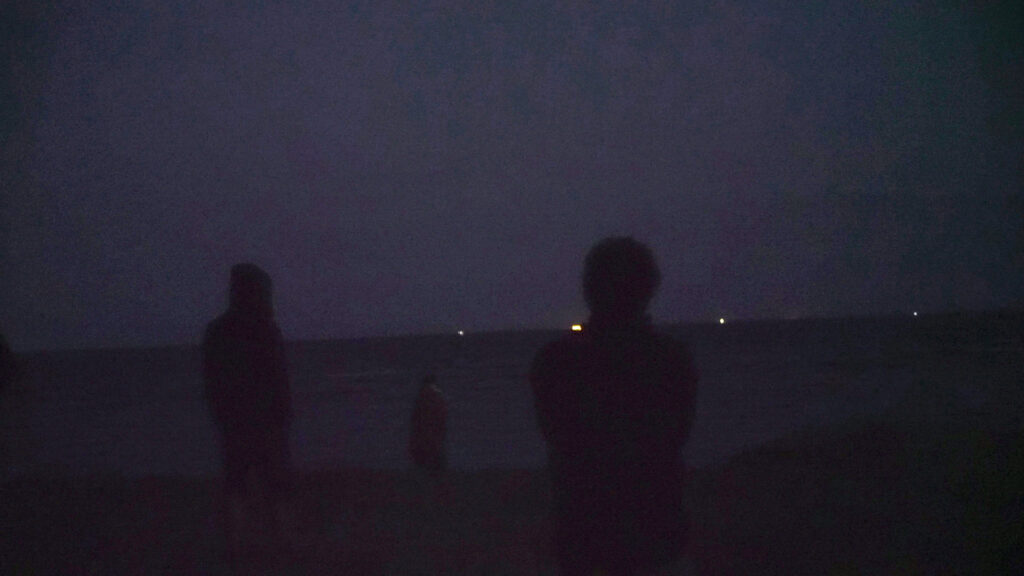
Bibliography:
Deleuze, G. (1987). Dialogues II. Columbia University Press
Quignard, P. (2012) Butes. Narrativa Sexto Piso.
Gatto, E. (2018) Futuridades, Ensayos sobre política posutópica. Casagrande
Nelson, J. (2013) “Anticipating the use of future things: Towards a framework for prospective use analysis in innovation design projects”, en Applied Ergonomics 44
Whitmer, T. (1953). The art of improvisation (1934), M. Witmark & Sons, New York.
